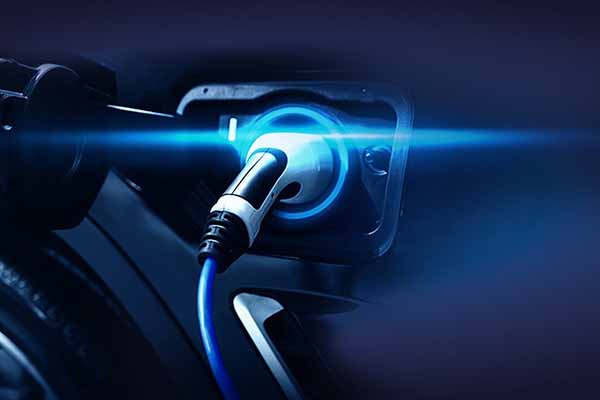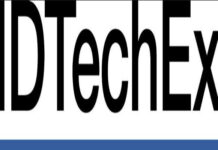EV Barriers and Solutions
Despite the attractive incentives offered by governments around the world and the advantages of driving electric vehicles (EVs), the growth has been rather sluggish in the last few years. Plus, the COVID-19 pandemic has further aggravated the situation, leading to a higher than ever consumer demand for EVs without the stock to support it. While there are several causes contributing to this slump in supply, four major factors affecting the sale of EVs are high cost, range limitations, infrastructure unavailability, and high battery-charging time.
Traditionally, EVs have been 2 to 2.5 times more expensive than conventional gasoline- or diesel-powered automobiles, and this cost has recently further risen with base metal and rare earth prices going higher due to the crisis in Ukraine. However, this can be offset by increasing production, providing government incentives and tax credits to EV buyers, and improving battery technology.
Speaking of production, early this year, both General Motors Company (GM) and Ford Motor Company unveiled plans to boost EV production in the United States. To significantly expand battery cell manufacturing and electric truck production capacity, GM announced an investment of more than US $7 billion in 4 Michigan manufacturing sites. While Ford revealed plans to spend US $50 billion and build more than 2 million EVs in 2026, accounting for about one-third of its annual expected global production. Meanwhile,. Tesla’s Gigafactories in Texas and Berlin are ready for ramping up the production this year.
Like the key auto manufacturers in the U.S., major auto players in Europe are also planning to boost EV production and transition to all-electric cars by 2030. As EV sales grow, electric cars are coming closer to achieving price parity with traditional internal-combustion-engine vehicles in Europe.
Range is another deterrent. While few years ago the driving range was limited, today’s models are flaunting 300+ miles per charge. Latest report from Edmunds shows that the 2022 model Mercedes-Benz EQS demonstrated a range of 450 miles, while the EPA estimate was rated at 350 miles. Similarly, the 2021 Tesla Model 3 placed second with a range of 345 miles and an EPA estimate at 353 miles.
In all, there are 32 EV models listed on Edmunds’ EV Range Leaderboard. The #32 model on this board is the 2022 Mazda MX-30 offering a range of 114 miles with an EPA rating of 100 miles. Efforts continue to improve the range per charge. Recently, Lucid Motor’s first EV, Lucid Air, designed in Silicon Valley and produced in Arizona, delivered an industry-leading 500+ miles of range using a proprietary powertrain technology. For performance and range, Lucid Air won the MotorTrends “2022 Car of the Year” award. Lucid Air’s built-in Wunderbox is an ultrafast battery charger that implements a 900 V+ architecture to fill up to 300 miles of charge in just about 20 minutes. In addition to fast charging, it’s compatible with nearly every public charging station in the country and plans to offer bidirectional charging capabilities soon.
Ford has also taken the next step of bidirectional (two-way) charging with its new F-150 Lightning EV. At the recent CERAweek 2022 in Houston, TX, Ford, and PG&E announced a collaboration to explore how Ford’s F‑150 Lightning EV with bidirectional charging capability can interact with the electric grid and provide electric reliability benefits to PG&E customers. “Through collaborations with automakers like Ford, we are innovating together for a cleaner, safer, and brighter future for all,” said PG&E’s CEO Patti Poppe. Through such EV charging infrastructure programs, PG&E is helping in reducing one of the biggest barriers to EV adoption, the lack of available outlets to charge.
For e-mobility to be practical and attractive for the majority of car users, a bigger network of charging stations and outlets is needed. In January 2022, according to the research analyst company Statista, there were almost 113,600 charging outlets in the U.S. for plug-in EVs with 36% of them in California. In addition, President Biden has announced a US $7.5 billion investment for EV charging infrastructure network in the U.S. It is not surprising to see China as a leading market for EV consumption because it offers a solid infrastructure with around 800,000 charging stations spread across the country.
Simultaneously, manufacturers are building ultrafast chargers to cut charging time to less than 20 minutes. Lately, at the Future Propulsion Conference 2022 (FPC2022) in the U.K, McLaren Applied announced that it was advancing toward full production of Inverter Platform Generation 5 (IPG5), an 800-V silicon carbide (SiC) inverter designed for ultrafast charging, greater efficiency, and longer range (Figure 1). IPG5 is a new architecture that supports next-generation EVs offering lighter electric cabling and ultrafast charging while reducing the weight and cost of the drivetrain.
In short, charging architecture is moving from 400- to 800-V architecture in the near future. At this high voltage, battery management systems (BMSs) need mechanically robust plug connections and must provide high levels of safety and reliability with constant communication with the charging station. All this translates into very high performance, high-voltage AC/DC converters, and high-isolation DC/DC converters. For this monitoring task, RECOM has developed the RAC05-xxSK/480 family of AC/DC converters that can handle input voltages up to 528 V AC. Additionally, RECOM has readied a series of 1 W isolated DC/DC converters used in BMS applications in electric cars. Here, each battery module requires a separate DC/DC converter to isolate monitoring electronics equipment operating at several floating voltages delivered from the controller area network bus.
Furthermore, charging stations are using highly isolated DC/DC converters for controlling power semiconductors, such as IGBT, SiC or Si MOSFETs or GaN FETs. This requires optimal gate drivers that can precisely provide positive and negative voltages to control the switching process and avoid misfires. Because the power switches have high floating voltages, the gate driver’s voltage supply needs very effective isolation. To this end, RECOM has developed asymmetric output reinforced isolation DC/DC converters with output voltages of +15V/-9V (IGBT), +15V/-3V and +20V/5V (SiC) and +6V(GaN). To ensure a long system service life, the converters offer wide operating temperature ranges and low isolation capacitance.
Adopting Solid-State Batteries
As the race to improve e-mobility technologies across the world continues, many automobile original equipment manufacturers (OEMs) are now getting ready to incorporate solid-state batteries (SSBs), an alternative to conventional Lithium-ion (Li-ion) batteries. SSB batteries replace the liquid- or gel-form electrolyte found in popular Li-ion batteries with solid, conductive electrodes and electrolytes that offer lighter weight with greater energy density, and more range at lower cost. Plus, the emerging SSBs offer greater safety as they contain no flammable materials.
To speed up the development of SSBs, automotive OEMs are investing money and resources in battery manufacturing technologies. The German automaker Volkswagen, for example, announced a USD $100 million investment in QuantumScape Corp., an SSB startup that spun out of Stanford University, California. In a recent press release, QuantumScape indicated that its solid-state lithium-metal battery cells have completed 400 consecutive 15-minute fast-charging (4C) cycles from 10% to 80% of the cell’s capacity while retaining well above 80% of the initial energy. The SSB startup claims that it is a first for this type of battery technology. QuantumScape conducted the tests on commercially relevant sized, single-layer prototype battery cells at multiple temperatures (25°C and 45°C), 3.4 atmospheres of pressure, and 100% depth of discharge. Last year, the company demonstrated a 10-layer cell capable of at least 800 cycles with energy retention greater than 80%; a 1C–1C charge and discharge rate at 25°C, 3.4 atmospheres of pressure, and 100% depth of discharge.
Jagdeep Singh, co-founder and CEO of QuantumScape, said in a statement, “We are delighted to have met this technical milestone with Volkswagen, and we look forward to working jointly to bring solid-state lithium-metal battery technology into industrialized mass-production.” Last December, in an interview with Verge, the CEO said that QuantumScape will be ready to go into production in 2024.
Likewise, Mercedes-Benz has inked a cooperation deal with the Taiwanese SSB battery maker ProLogium Technology Co. to build test vehicles equipped with co-developed SSBs in the coming years. And, the automaker Ford has invested US $20 million in the SSB developer Solid Power. The partnership is expected to capitalize on Solid Power’s fully automated, roll-to-roll production facility, which became operational only last year.
New technologies such as SSB require high-performance, innovative voltage converters in both production and implementation, and RECOM is ready to deliver custom and semicustom AC/DC and DC/DC solutions for this constantly evolving e-mobility.
More on this can read at: http://www.recom-power.com/














